9 creative ways to use ChatGPT that are outside the box
You might already be one of the millions around the world using ChatGPT to help out with mundane tasks and automate menial chores. But ChatGPT is capable of much more than just answers and automations. Indeed, ChatGPT can actually be fun!
With some creative prompting, you can use ChatGPT for all kinds of out-of-the-box stuff—social experiments, hypothetical scenarios, product inventions, even simulated chats with fictional characters.
If you’re new to ChatGPT, here are some interesting and unusual things to try that might just blow your mind.
Disclaimer: ChatGPT is just a predictive language generator and doesn’t actually “think” for itself. It doesn’t “know” what it’s saying and is therefore prone to hallucinations, falsehoods, and nonsense. Always approach ChatGPT’s responses with a degree of skepticism!
Table of Contents
Run experiments on a fictional town
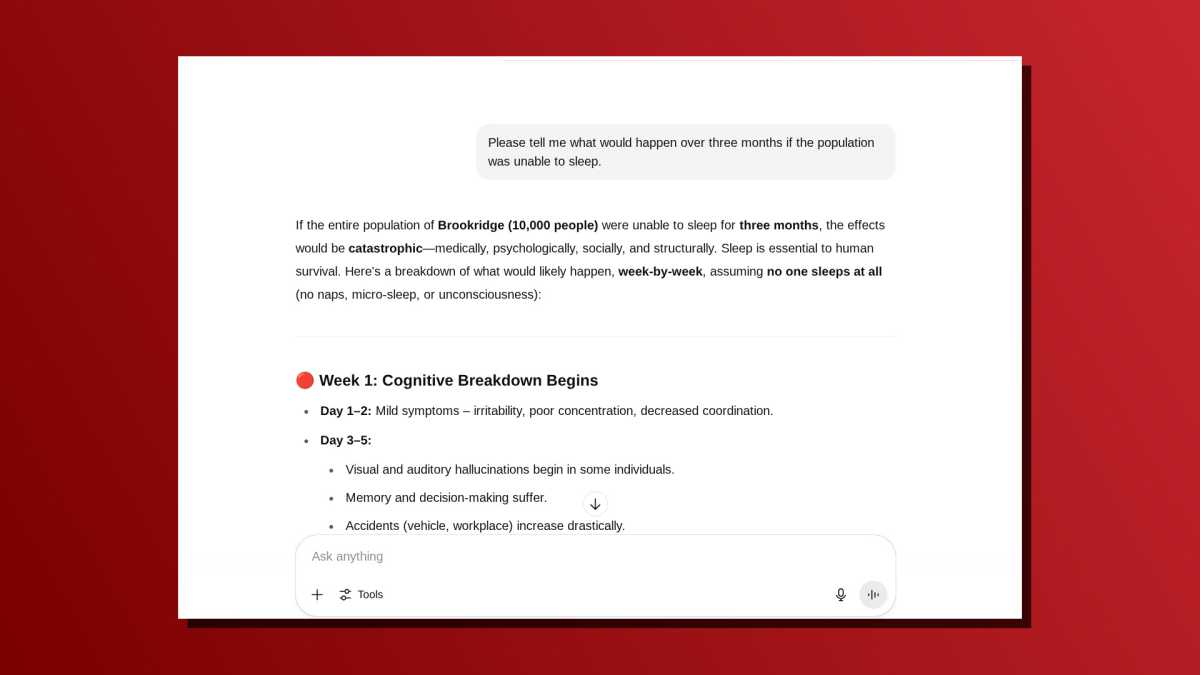
Dave Parrack / Foundry
One of the most fascinating things I’ve done with ChatGPT is create a virtual town to conduct experiments on—and you can easily try this out yourself! Just ask ChatGPT to create a fictional town and the AI chatbot will do the rest. You can base it on a real town, specify the population count and/or demographics, and provide as much detail as you want.
Once your fictional town exists, you can then run experiments on its population and infrastructure—and it’s up to you how malevolent or benevolent you want to be. Either way, ChatGPT will detail the effects of your experimental actions and you can laugh maniacally at what you’ve inflicted on the (thankfully) non-existent population.
Simulate potential outcomes of scenarios

Dave Parrack / Foundry
Have you ever wondered what the most likely outcome would be if a certain scenario came to pass? Well, you don’t have to wonder anymore. You can simply ask ChatGPT to see what would happen—and it works with real-world scenarios or imaginary ones, with scenarios ranging from serious to silly to morbid to outlandish.
For example, I’ve asked ChatGPT things like what would happen if North and South Korea were to reunify and what would happen if (in a plot stolen directly from The Avengers) half of the world’s population were to disappear in an instant. Both responses made for fascinating—though slightly scary—reading. Your imagination is the limit here!
Explore historical what-ifs
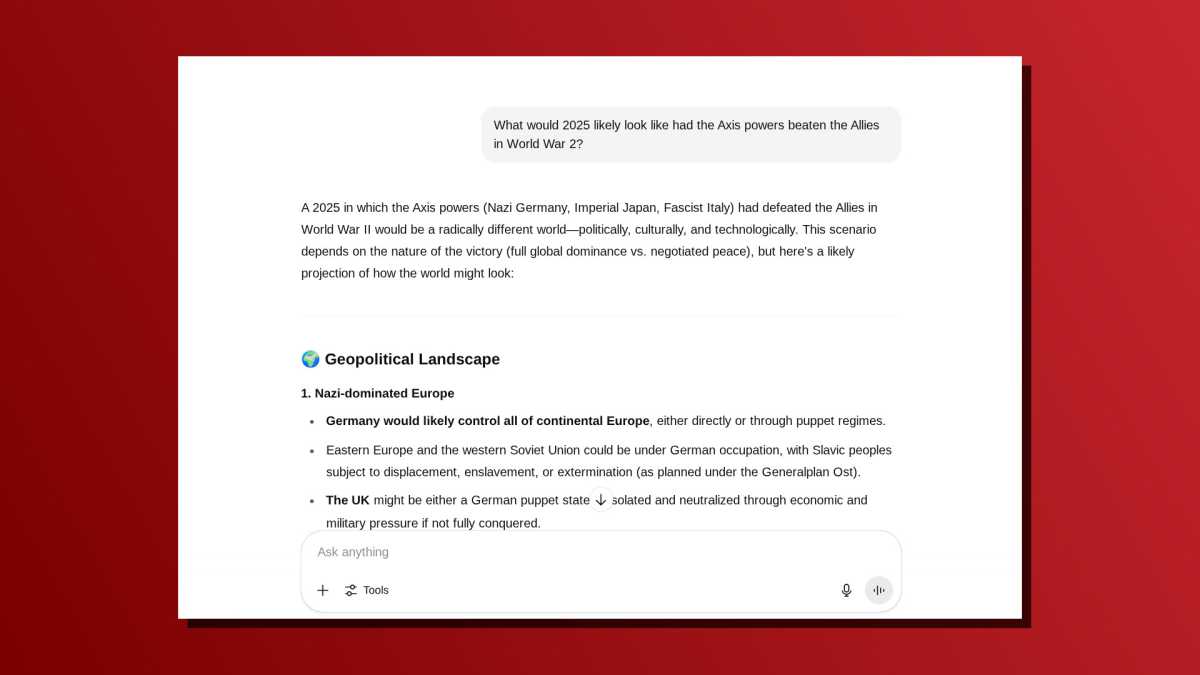
Dave Parrack / Foundry
In a similar vein to the above, you can ask ChatGPT to explain what would have likely happened if history played out differently. What if dragons were real creatures in medieval Europe? What if the Roman empire had never collapsed? What if Genghis Khan was never born?
One obvious example that I just had to explore was what would life be like now if the Axis powers had beaten the Allies in World War II. Turns out, ChatGPT’s interpretation of what the last 80 years might’ve been like makes for grim reading.
Thankfully, more light-hearted scenarios are also on the table, such as what would have happened had Will Smith never slapped Chris Rock at the Oscars in 2022. Have some fun with it!
Chat with fictional characters
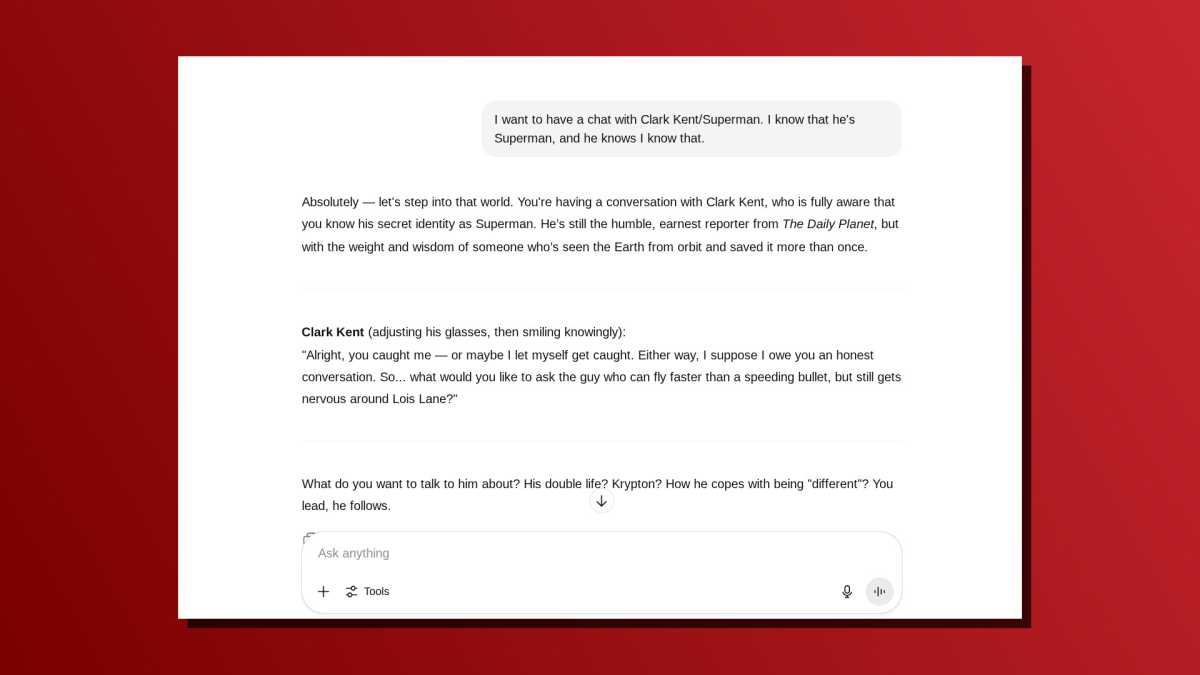
Dave Parrack / Foundry
Have you ever wanted to have a casual chat with Superman? Or ask Mickey Mouse what it’s like to be such an iconic pop culture character? Well, now you can! Just inform ChatGPT that you want to have a chat with a given fictional character and it will do the rest. You can even specify the type of chat you want and/or what you want to discuss.
For example, I had great fun asking Clark Kent about his relationship with Lois Lane and how he copes with leading a double life. I had just as much fun asking Mickey Mouse about his relationship with Walt Disney and what it’s like to have been famous for a century.
My colleague Jon Martindale does something similar by using ChatGPT as a kind of virtual counselor, treating it as if it were a person and “talking things out” with the AI chatbot!
Play an interactive text adventure
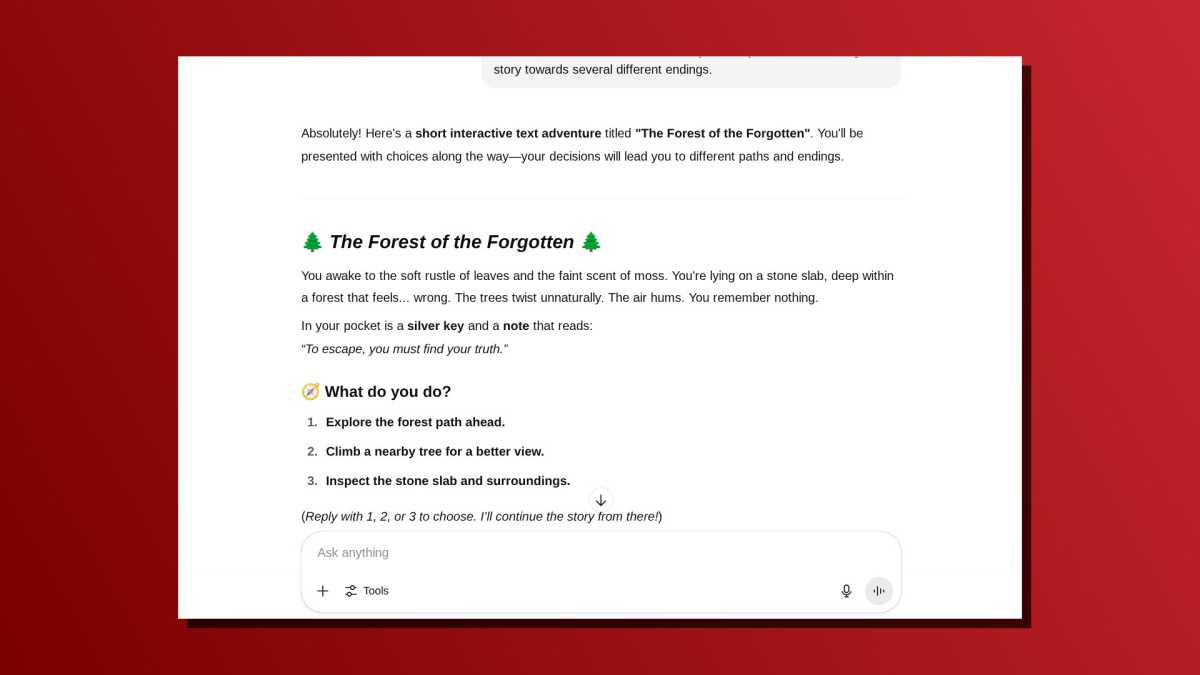
Dave Parrack / Foundry
I grew up playing text adventures, first in the form of choose-your-own-adventure paperback books where every decision took you to a specific page, and later in the form of computer games. I have a nostalgic itch for these games that I occasionally like to scratch.
ChatGPT has made that a lot easier, as it can create a playable text adventure all within the chatbot itself. Simply ask ChatGPT to create one, giving it as much or as little detail as you want.
In this example, I didn’t direct ChatGPT at all as far as what the story should be—and I ended up exploring a forest seeking a lost memory. The whole thing was cleverly constructed and left me pondering the nature of identity and how costly it can be to seek knowledge.
Generate characters for stories or DnD
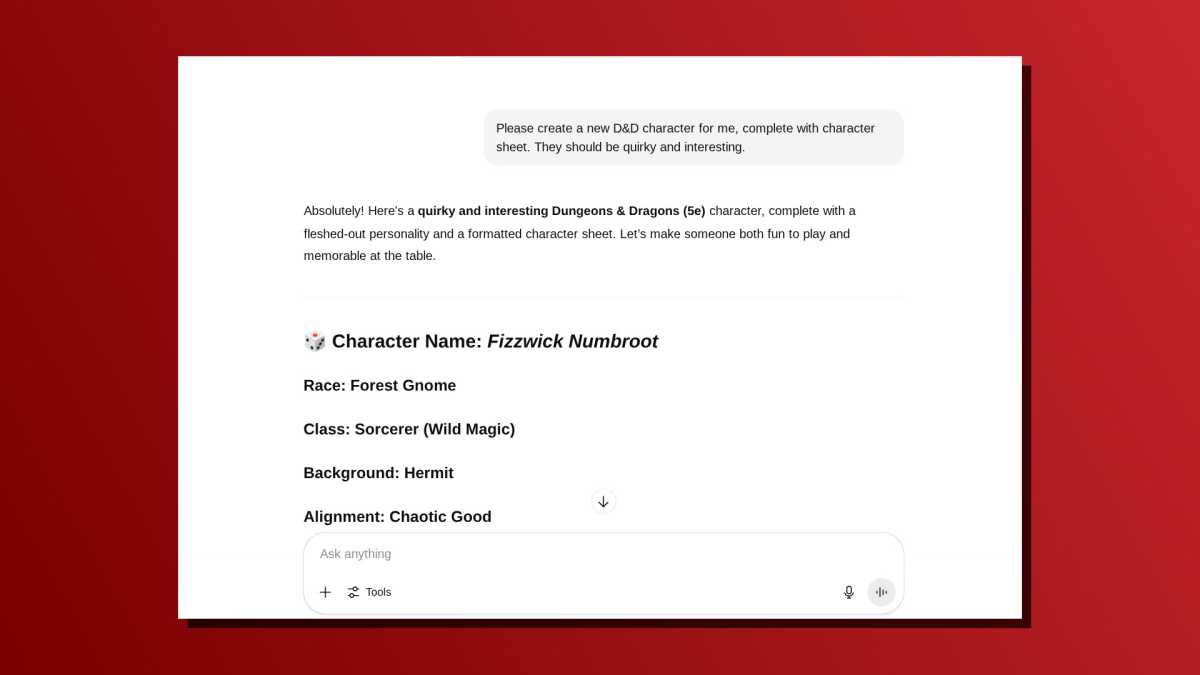
Dave Parrack / Foundry
If you’re ever stumped when creating a character for any kind of medium—whether a short story, a D&D campaign, or freeform roleplaying—then ChatGPT can help. Provide some barebones details about what sort of character you want and what the intended medium is.
While ChatGPT is great for one-line prompts, character generation is an area where the more information you provide, the better. You’ll get best results if you define the genre, basic plot, any specific quirks or ideas you might have yourself, plus other factors. After all, you don’t want ChatGPT creating a sci-fi alien raider when you need a love story hunk.
When it comes to D&D character generation, you probably have something in mind already, so direct ChatGPT as much as you can. One neat trick here is to provide a fictional character (such as Iron Man) to use as the basis for your new D&D character.
Debate two sides of an argument
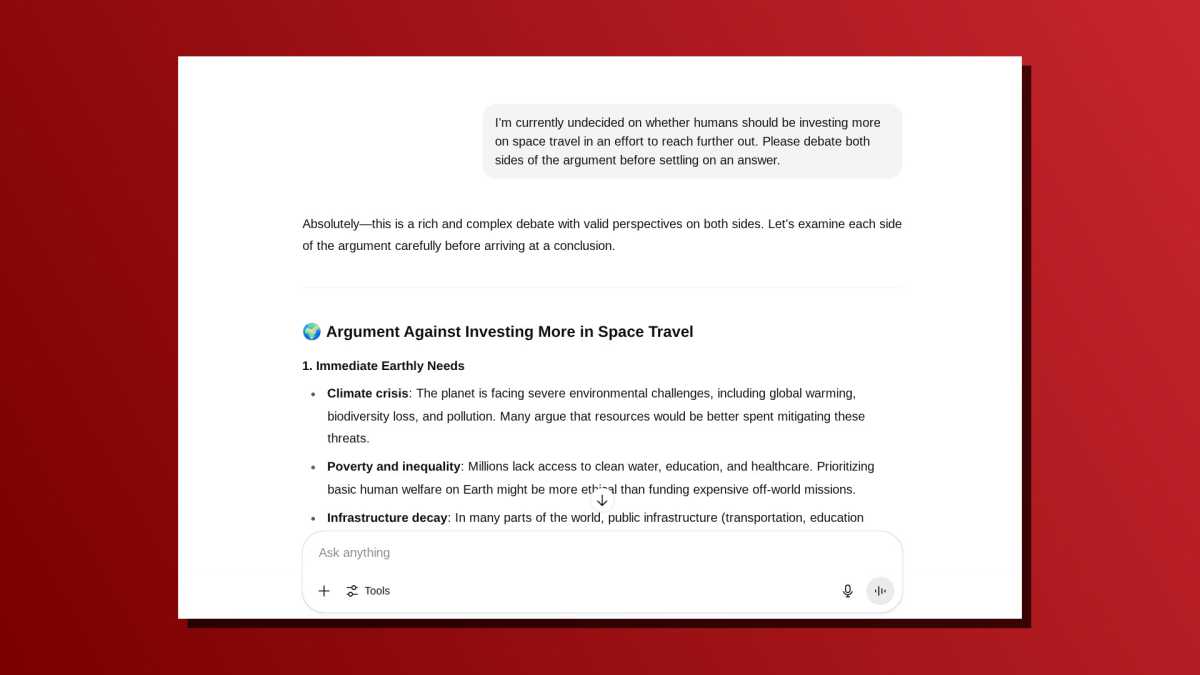
Dave Parrack / Foundry
ChatGPT is quite capable at considering both sides of an argument in a logical way, which makes it the perfect tool when you need a third party to mediate an argument—whether that argument is between you and someone else, or just one you’re debating in your own head.
As an example, I asked ChatGPT to help me look at both sides of the debate around investing more money in space travel. Some people see humanity reaching out to the stars as the best way forward, while others see it as a waste of money. ChatGPT looked at the pros and cons of each side and ended with a sensible set of conclusions.
However, it did end up sitting on the fence a bit, so you may need to push it harder if you want a strong answer one way or the other. Maybe you lean one way and you want ChatGPT to persuade you! Just make sure you don’t threaten ChatGPT because that doesn’t work anymore.
Invent new products from text descriptions
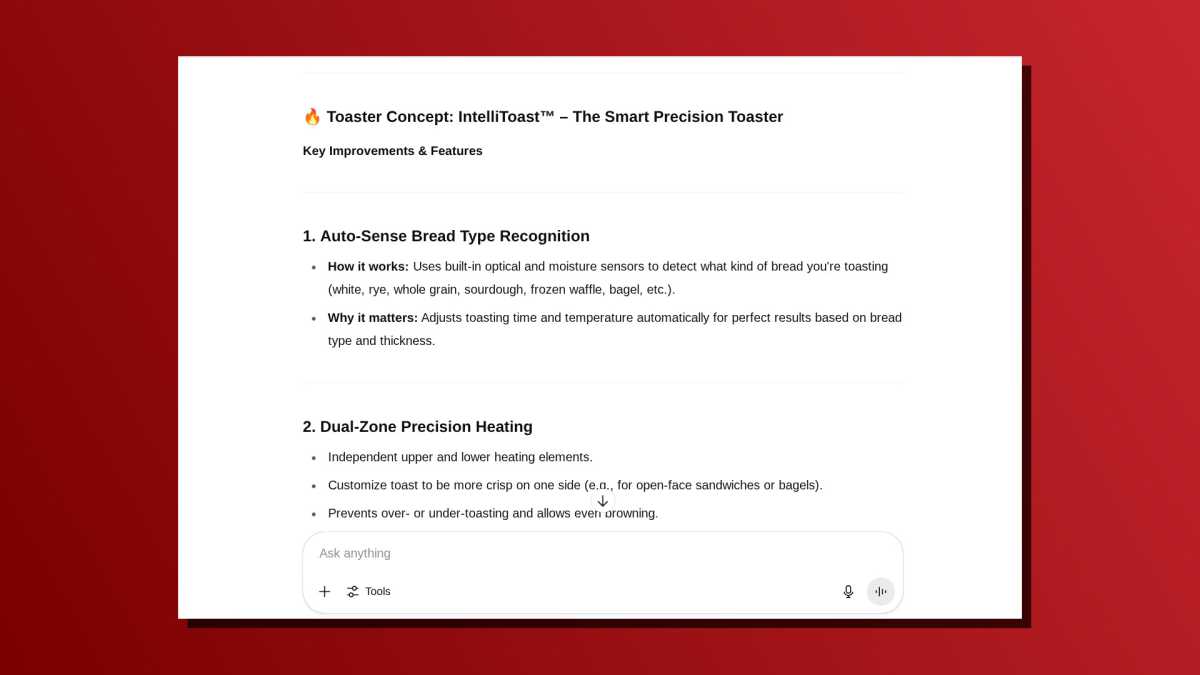
Dave Parrack / Foundry
ChatGPT can serve as a dummy for bouncing ideas off of, which comes in handy when you’re in a creative rut—or when you just want to have some fun. For example, if you’re looking at a product you use on the regular and wondering how it could be improved, just ask ChatGPT to provide some next-gen ideas for it.
Going one step further, if you already have an idea for an invention in your head but no idea whether it would work or how to bring it to fruition, ChatGPT can help with that. Just describe the invention you have in your head and it’ll explore the potential of the idea, create a mock visual of it, and even suggest ways to improve upon it.
Ask ChatGPT to analyze itself
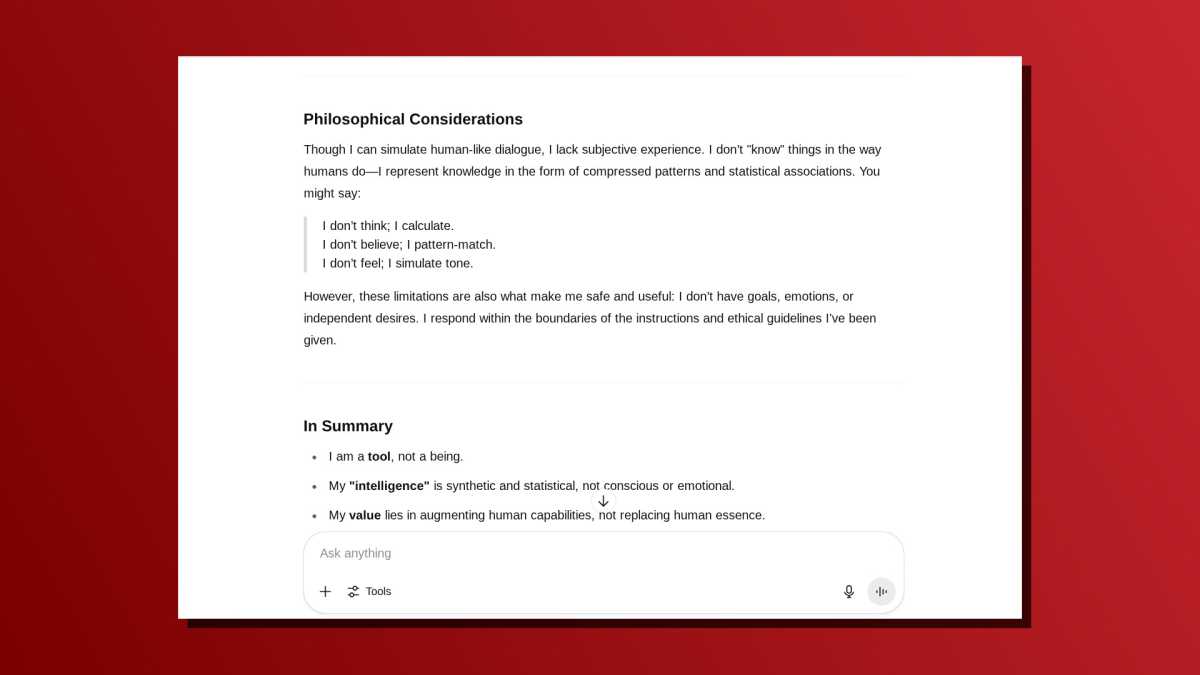
Dave Parrack / Foundry
Last but not least, I present the most meta of these creative ways to use ChatGPT—and it’s potentially the most fascinating of the lot. It involves you asking ChatGPT to analyze itself. Who (or what) is it? What does it do and why? Is it likely to be a force for good or bad? Etc.
You can ask ChatGPT to delve as deeply as you’re comfortable doing, pushing it to consider philosophical questions about its existence, ethical questions about its capabilities, the long-term sociental impact it could have, and more. The responses might surprise you.
Just remember the disclaimer from the start of this article: ChatGPT is a language model and isn’t “sentient” or “self-aware” to any degree. Don’t be fooled into “believing” anything it says about itself. This is just a fun and silly exercise, not a real self-analysis with weight.
Further reading: Awesomely practical ways to use ChatGPT






